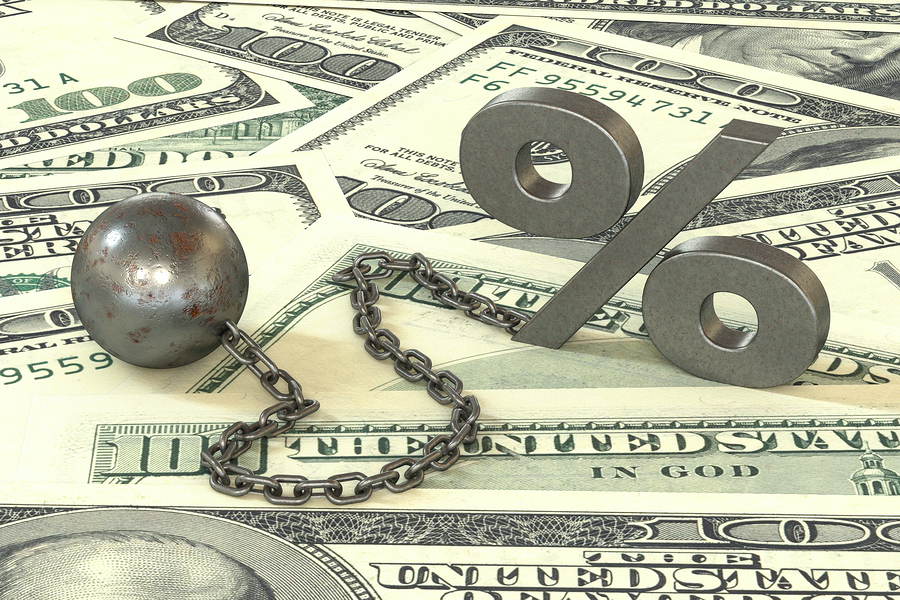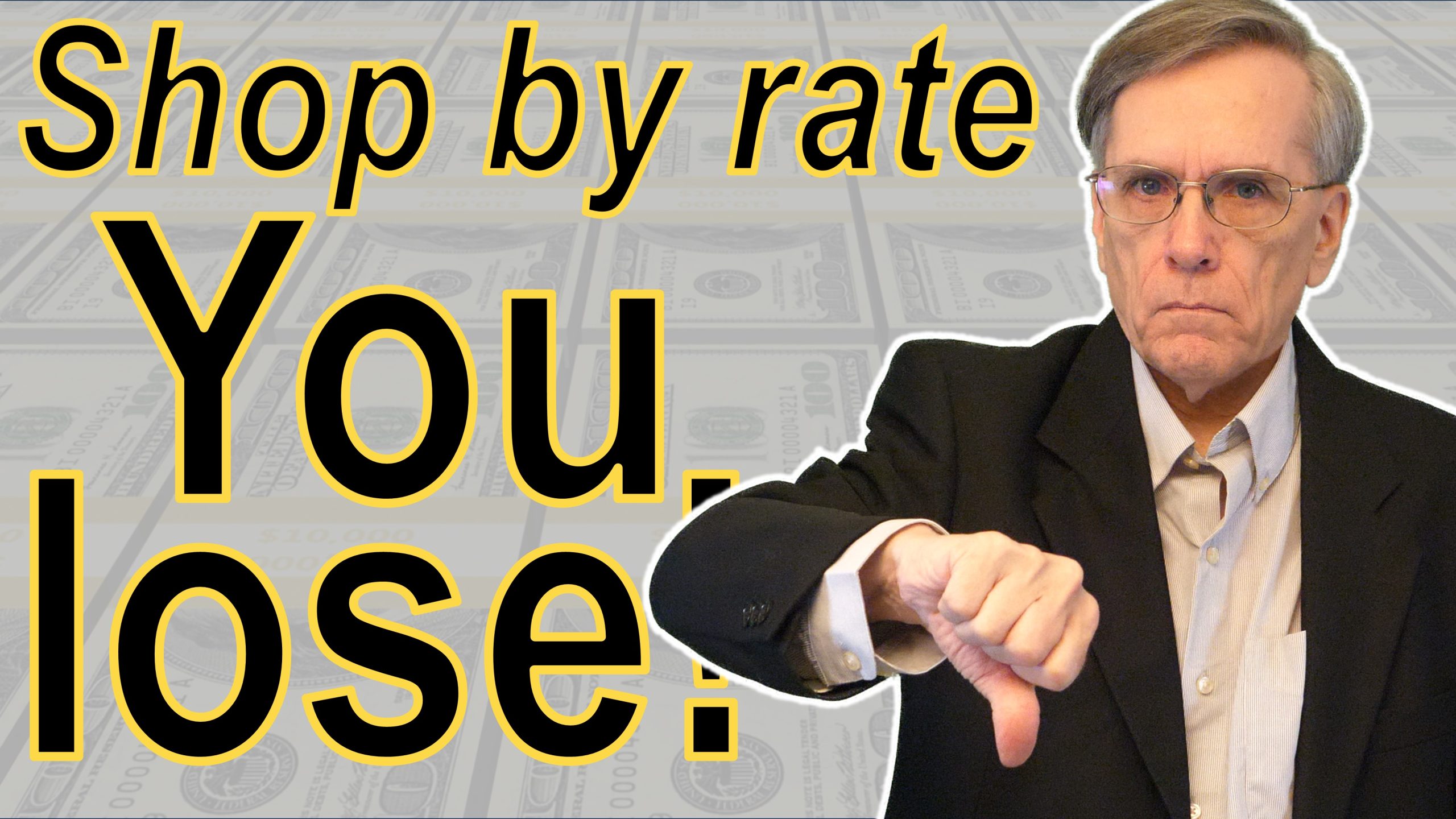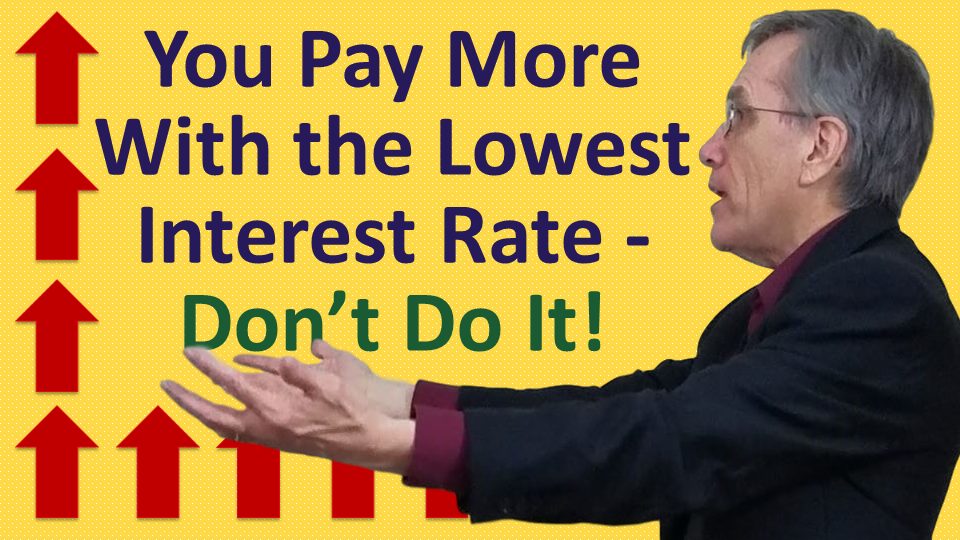Trying to find the lowest interest rate is NOT how to choose a mortgage! You…
How Much Interest Do You Really Pay?
Housing is generally your second largest category of expenses. Only taxes is larger. Think about how large an expense it really is — especially if you are making payments on a mortgage loan.
Have you ever multiplied your mortgage payment by the 360 payments you are expected to make over 30 years (assuming you have a mortgage amortized over 30 years)? What do you get?
The rule of thumb has always been that you will pay back two to three times what you borrow on a mortgage. For example, at three times, if you borrow $100,000 you could pay back $300,000 over 30 years. That’s $200,000 in interest. Someone in this situation may think they have a 9.5% interest rate (that’s the rate at which you’ll pay back 3 times what you borrow, see the chart below) but in reality, isn’t it actually a 200% interest rate?
The actual amount you would pay over 30 years will depend on the interest rate. Here is a chart that shows how much you could pay back based on a $100,000 loan over 30 years. Even a 6% interest rate, still higher than today’s market rate, means a 116% rate over 30 years – way too much, wouldn’t you agree?
| The Interest Rate You Really Pay When You Keep the Loan for 30 Years | ||||
|---|---|---|---|---|
| Based on a $100,000 Mortgage Loan | ||||
| Interest Rate | Monthly Payment | Total Payments Over 30 Years | Total Interest Paid Over 30 Years | Interest Rate Is Really Like |
| 4.0% | $477 | $171,720 | $71,870 | 72% |
| 5.0% | $537 | $193,320 | $93,320 | 93% |
| 6.0% | $600 | $216,000 | $116,000 | 116% |
| 7.0% | $665 | $239,400 | $139,400 | 139% |
| 8.0% | $734 | $264,240 | $164,240 | 164% |
| 9.0% | $805 | $289,800 | $189,800 | 190% |
| 9.5% | $841 | $302,760 | $202,760 | 203% |
| 10.0% | $878 | $316,080 | $216,080 | 216% |
It’s even worse than that
Yet, it can be worse than that. This interest rate in the right column assumes that you keep the same mortgage and pay on it for 30 years. But what do most people do? They refinance or they move. It is often stated that the average length of time people keep a mortgage is actually about 6 years. If you start over with a new mortgage loan every 6 years, which part of the payment schedule are you always in?
Most people know that they pay mostly interest and very little principle in the early years of a mortgage. Here’s what an amortization schedule would look like at a 6% interest rate for a few selected payments.
| How Much Interest Do You Really Pay? | |||
|---|---|---|---|
| On a $100,000 loan at 6% interest, $600 payment | |||
| Payment Number | Principal | Interest | Balance |
| 1 - after 1 month | $100 | $500 | $99,900 |
| 24 - after 2 years | $112 | $488 | $97,500 |
| 72 - after 6 years | $142 | $458 | $93,100 |
| 120 - after 10 years | $180 | $420 | $83,700 |
| 180 - after 15 years | $243 | $357 | $71,100 |
| 222 - after 18.5 years | $300 | $300 | $59,700 |
| 252 - after 21 years | $348 | $252 | $50,000 |
| 312 - after 26 years | $470 | $130 | $25,500 |
| 336 - after 28 years | $530 | $70 | $13,500 |
| Notice how much interest and how little principle is paid on the first payment. This imbalance remains through most of the first half of payments. It takes until the 222nd payment, 18.5 years, over halfway through the total payments, before the principle and interest portions of the payment equal each other. And then it takes another 2.5 years until the loan balance has been paid down to half of its original balance, over two-thirds through the payment schedule. The higher the interest rate, the later in the payment schedule these two events happen. | |||
The only way you get the rate you think it is
If you make the regular payments that the lender wants you to make for 6 years and then refinance, you have only paid off $6,900, 6.9%, of the balance. If this cycle is repeated every 6 years for the 40 years of your working life, now you will have paid $218,000 in interest. So, now your interest is 218%! It was bad enough if you kept the same mortgage for 30 years (that was 116% interest), but now you could be at 218% interest!
The only way the interest rate is 6%, for example, is if you keep the loan for only one year — because 6% is an annual rate.
This is one important reason why you must diligently follow my Loan Payment Freedom Secrets plan. It will get you out of debt quickly and save tens or hundreds of thousands of dollars in interest — money that you have to earn.






